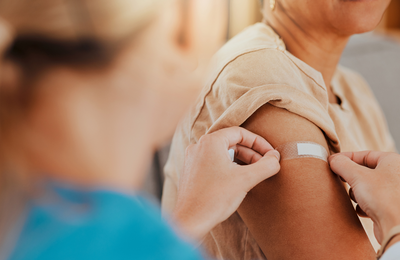
 Washington, D.C., August 28, 2014 (OPS).- Since the current Ebola outbreak began, a total of 2,615 cases and 1,427 deaths have been reported in West Africa. This outbreak is the largest in history in terms of the number of cases, deaths, and geographical extension, including periurban areas and various locations with large cross-border movements of people.
Washington, D.C., August 28, 2014 (OPS).- Since the current Ebola outbreak began, a total of 2,615 cases and 1,427 deaths have been reported in West Africa. This outbreak is the largest in history in terms of the number of cases, deaths, and geographical extension, including periurban areas and various locations with large cross-border movements of people.
On August 8, after a meeting of the Emergency Committee of the International Health Regulations, the Director-General of WHO announced that the current outbreak of the Ebola virus in West Africa constituted a "public health emergency of international concern" and recommended that countries should adopt temporary measures to control the outbreak, for example at departure points from the countries where there is transmission of the Ebola virus.
These measures are aimed at containing the outbreak at the local level in areas where there is transmission, and also at minimizing the likelihood of the disease spreading internationally to neighboring and other countries.
Although the Ebola virus causes severe disease, the likelihood of contagion is relatively low. Unlike other infectious diseases such as influenza, Ebola is not transmitted through the air, but when a person comes into contact with the blood, body fluids, or secretions (stool, urine, saliva, semen) of someone who is infected, and only when the infected person shows visible signs and symptoms of the disease.
To date, there have not been any imported human cases associated with the current Ebola outbreak; however, it is impossible to rule out the potential for such a case to be imported, which means that countries should not lower their guard. Although most of the countries of the Americas have no direct flights to or from the countries where Ebola transmission has been documented, the virus could enter the Region, most likely with international air travelers.
As the implementation of measures at points of departure is being strengthened in the affected countries, the risk of importation mainly involves people who, despite incubating the disease, are still symptom-free and are in a state of health that allows them to travel.
If a potential case is detected, containment should focus on immediate care of the patient, who will be transferred to a hospital with a designated isolation area, and on screening and identifying people who have been in contact with the patient, pending the results of laboratory testing of specimens.
The countries of the Americas are not starting from scratch. "Most countries have surveillance systems for early detection of any unusual health event. They have been getting ready to respond to outbreak situations for a long time and these efforts have intensified in recent years. This is reflected in the advances made in establishing the basic capacities specified in the International Health Regulations" explained Marcos Espinal, Director of the Department of Communicable Diseases and Health Analysis at PAHO/WHO.
When a case is detected, rigorous infection control measures are the cornerstone of all efforts to prevent the spread of infection.
Health systems should know how to manage and prevent an outbreak and their staff should be trained to do this. "Patients should be immediately isolated at the least suspicion of the Ebola virus. Contagion can be prevented by adopting strict measures to control the infection, including using personal protective equipment when there is contact with a patient, sanitizing affected areas, and having a clear understanding of how the virus is transmitted," Espinal said.
The necessary interventions can be carried out more efficiently through: community education and the provision of clear, transparent, up-to-date information; coordinated implementation of public health measures in a manner proportional to the risks; and access to and correct use of personal protective equipment by health workers.
The countries of the Americas are also currently strengthening coordination and response mechanisms with authorities and entities in the transportation sector, for example civil aviation authorities, in order to strengthen their capacity to manage cases of febrile illness at points of entry.
Related Links



